Controlled Synthesis of 2-Dimensional Layered Nanomaterials

The discovery of graphene has opened up new horizons in material science research, with its unique and spectacular physical, mechanical, electrical and optical properties. Graphene research has sparked great interest in a wide range of 2-dimensional layered materials with varying electronic properties. Atomically thin layered transition metal dichalcogenides (TMDs) such as MoS2, WS2, MoSe2 and WSe2 have been emerging as the cutting edge in materials science and engineering, due to their interesting electronic properties. These materials open up new opportunities for a variety of applications, including optoelectronics, energy conversion, and catalysis. To realize their potential device applications, it is highly desirable to achieve controllable growth of these layered nanomaterials, with tunable structure and morphology. We use several techniques to synthesize nanostructures and heterostructures od 2D layered materials with interesting morphologies. Recently we developed a novel approach for the controlled synthesis of luminescent quantum dots of TMDs. Some of our recent efforts in this area are listed below:
I. Direct deposition of MoSe2 nanocrystals onto conducting substrates: towards ultra-efficient electrocatalysts for hydrogen evolution
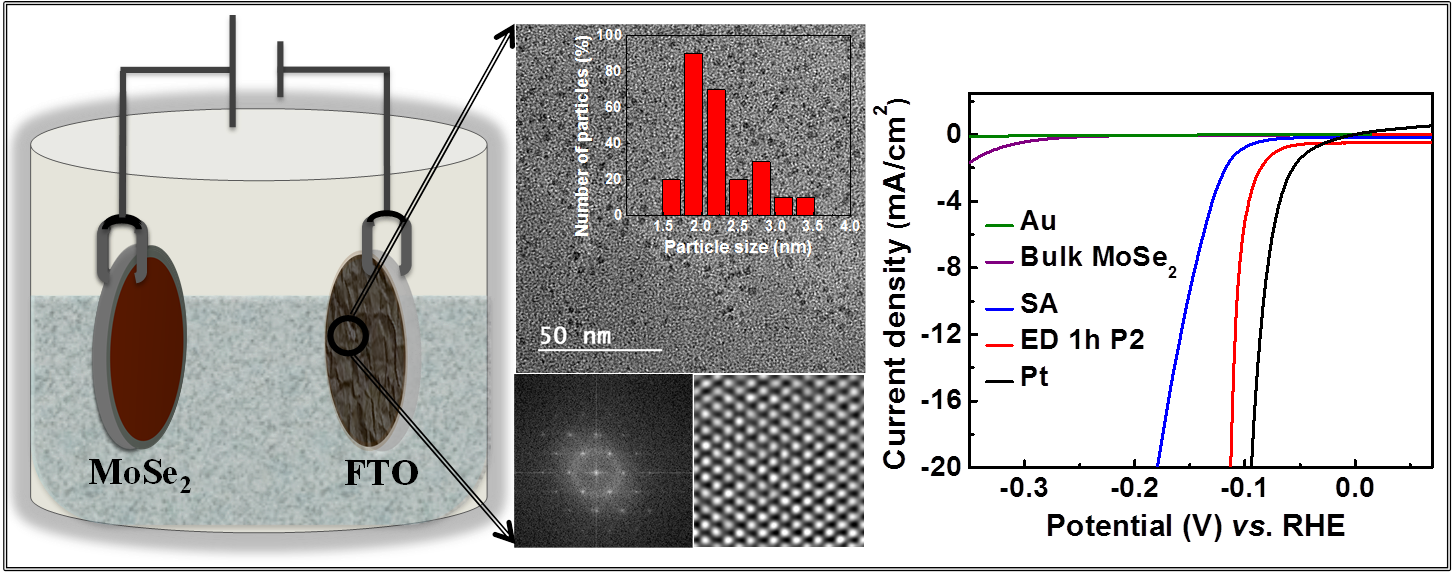
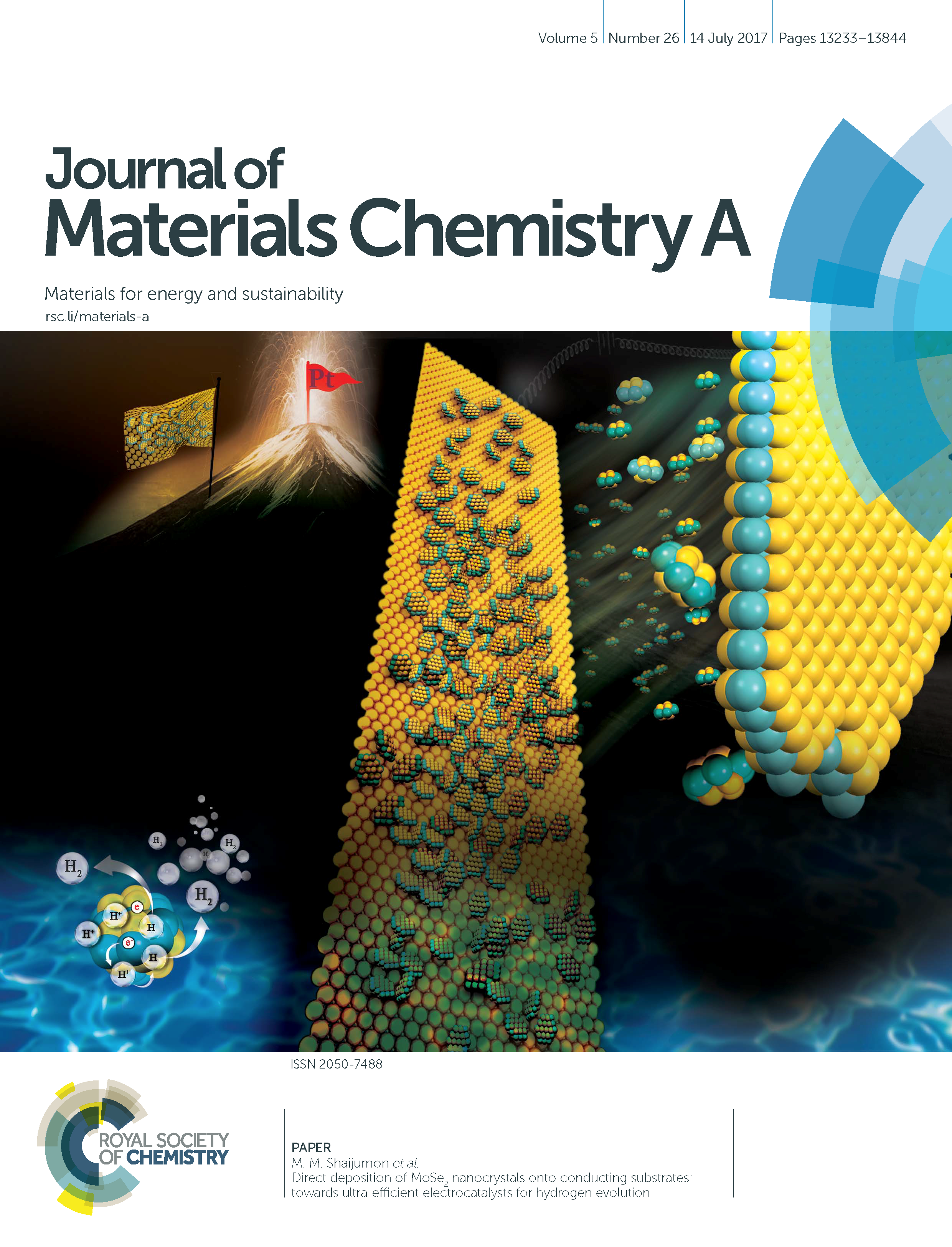
Monodisperse single/few-layered MoSe2 nanocrystals are directly deposited onto conducting substrates, through electrochemical exfoliation of bulk MoSe2, which exhibit remarkable electrocatalytic activity for the hydrogen evolution reaction. The exceptional electrocatalytic activity of MoSe2 nanocrystals is resulted from the synergistic advantages emerging from improved edge sites, enhanced electronic conductivity and the presence of new and active sites arising upon in-situ lithiation.
[Dijo Damien et al., J. Mater. Chem. A, 2017, 5, 13364] Read Article
II. Electrochemical Synthesis of Luminescent MoS2 Quantum Dots
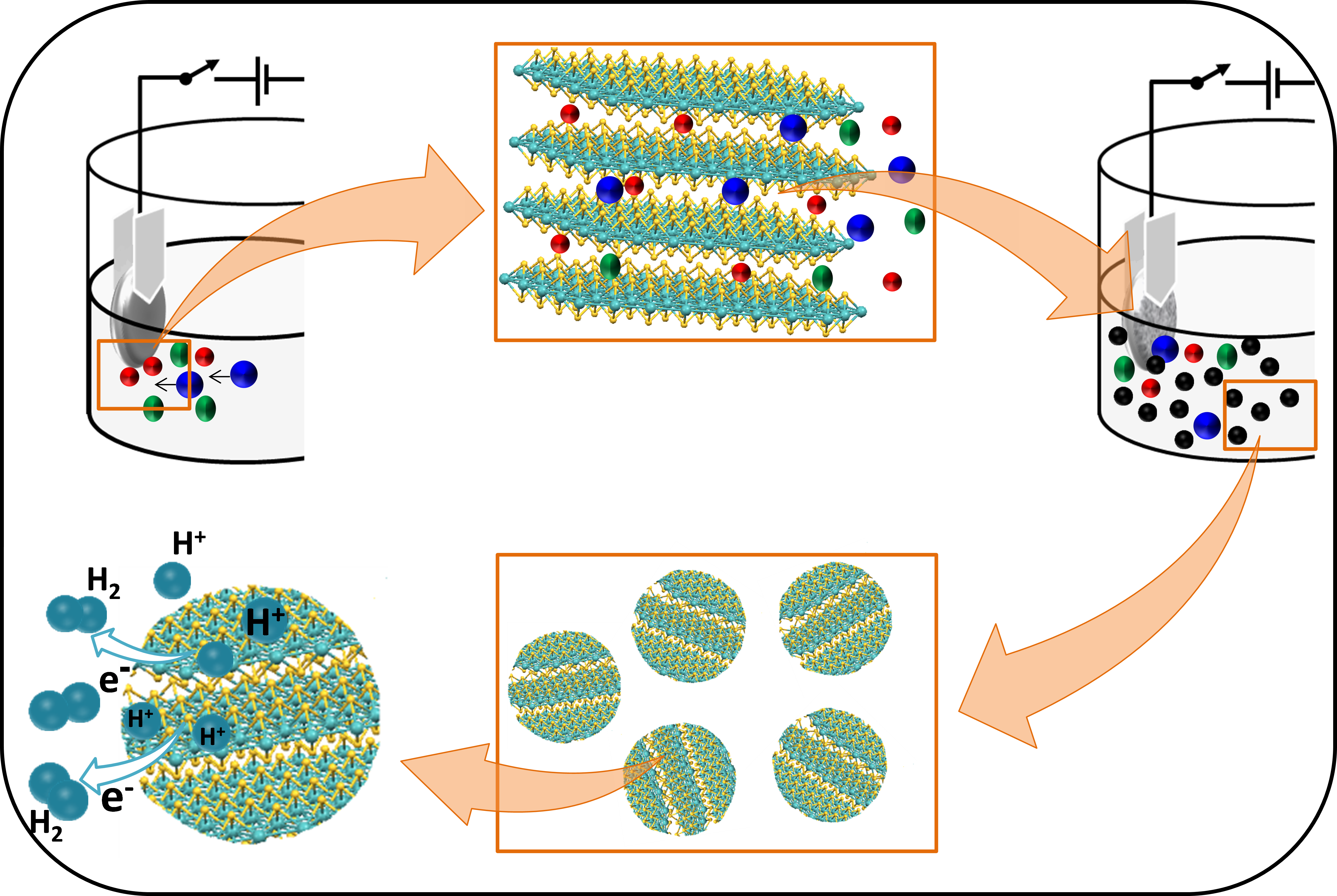
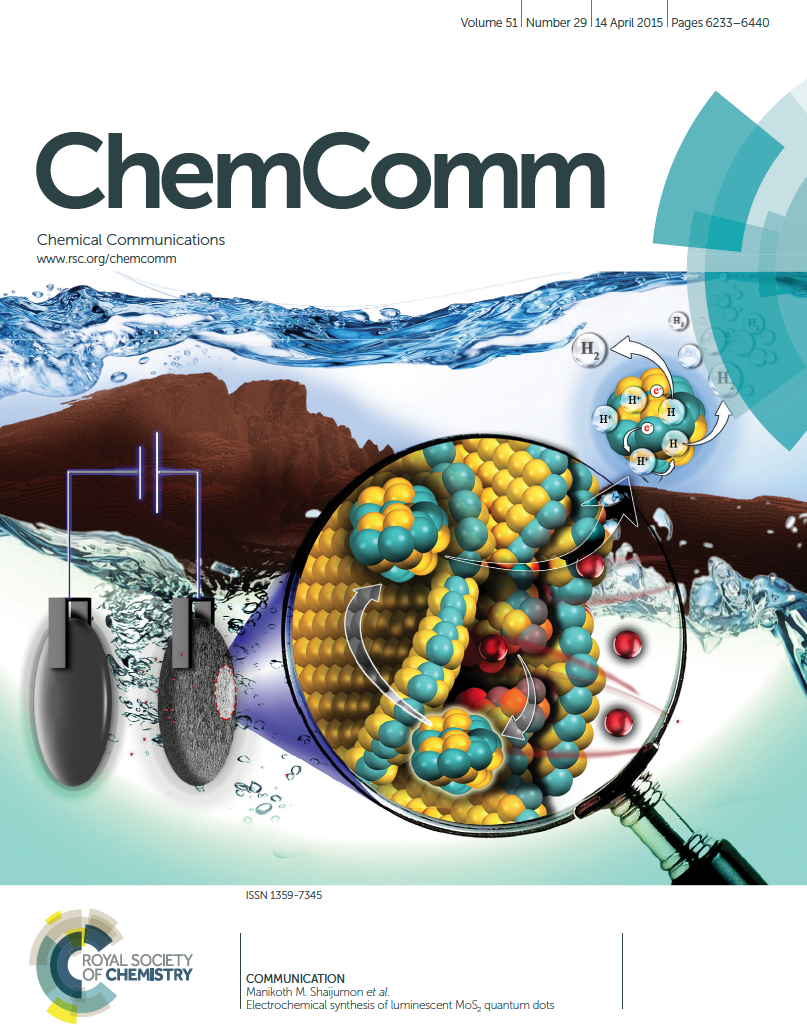
Size-controlled synthesis of luminescent quantum dots of mono-/few-layered MoS2 with narrow size distribution, ranging from 2.5 to 6 nm, from their bulk material using a unique electrochemical etching of bulk MoS2 is demonstrated. Excitation-dependent photoluminescence emission is observed in the MoS2 QDs. ‘‘As-synthesized’’ MoS2 QDs also exhibit excellent electrocatalytic activity towards hydrogen evolution reactions.
[Deepesh Gopalakrishnan, Dijo Damien et al., Chem. Commun., 2015, 51, 6293] Read Article
III. MoS2 Quantum Dot-Interspersed Exfoliated MoS2 Nanosheets
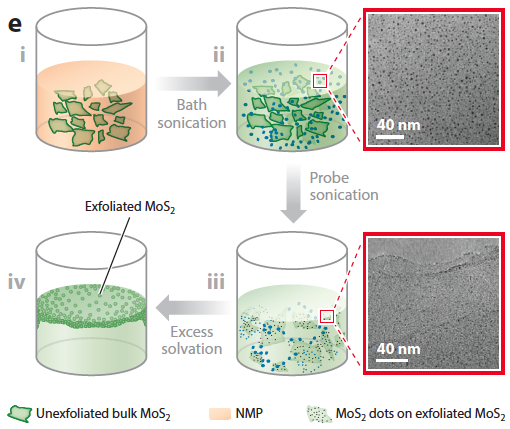
Hetero-dimensional nanostructures of MoS2 quantum dots interspersed few-layered sheets of MoS2 are synthesized for the first time, using liquid exfoliation technique in organic solvents. This unique hybrid morphology results from the optimized experimental conditions involving bath sonication followed by ultrasound probe sonication. We show that such hetero-dimensional hybrid materials could easily be extracted from the solvent as precipitates when post-treated with less polar volatile solvents such as chloroform. Such tailored MoS2 nanostructures, when directly used as electrodes for hydrogen evolution reaction (HER) showed excellent electrocatalytic activity with low overpotential.
[Deepesh Gopalakrishnan et al., ACS Nano, 2014, 8, 5297] Read Article
IV. Controllable Growth of Few-layer Spiral WS2
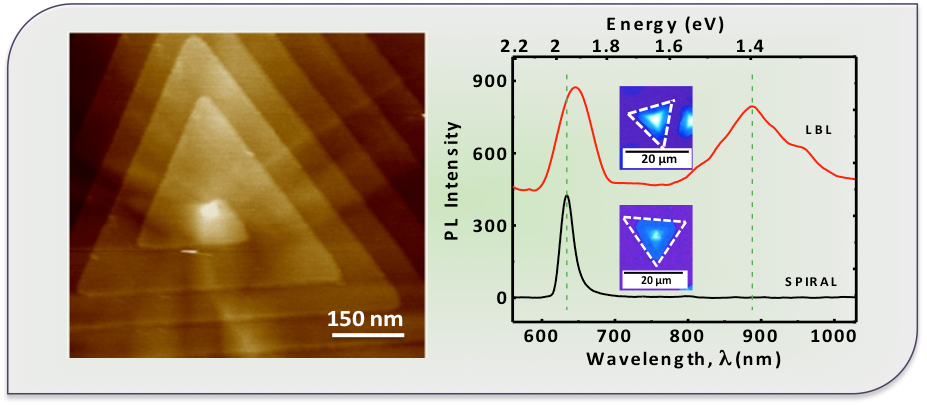

We demonstrate chemical vapor deposition (CVD) growth of spiral and pyramid-like few-layer WS2 by controlling the growth conditions and show that these nanostructures exhibit interesting optical properties. Unique nanoarchitectural morphologies of WS2 are observed by controlling the precursors, thereby varying the initial nucleation rates in CVD growth.
[Prasad V Sarma et al., RSC Adv, 2016, 6, 376] Read Article